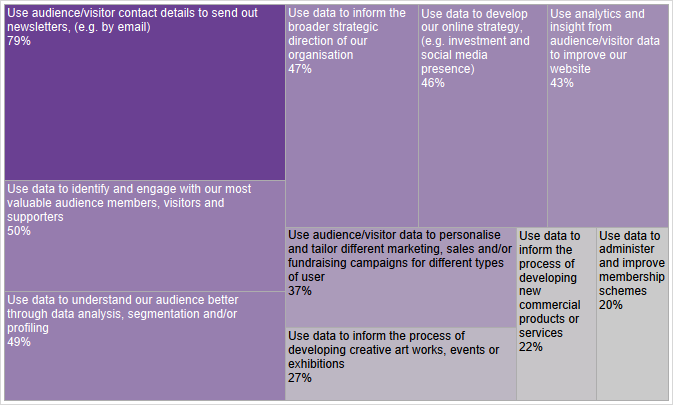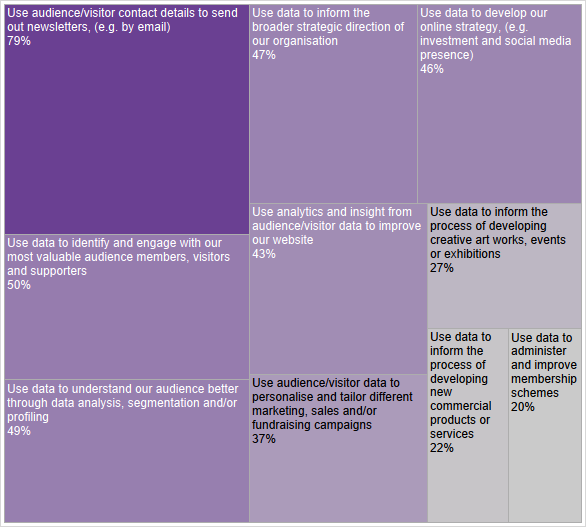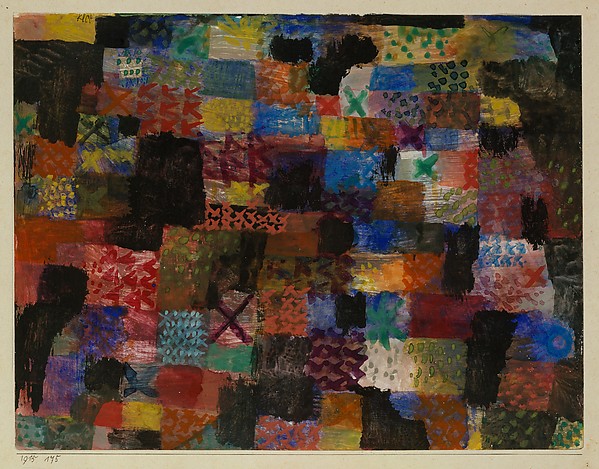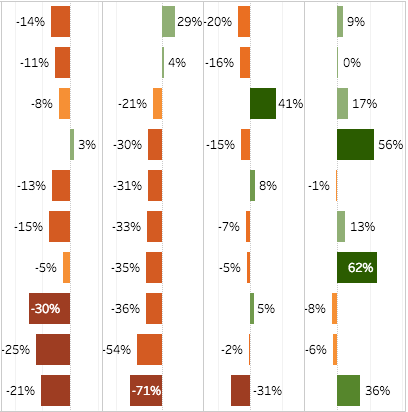The Digital Culture 2014 report has been published this week featuring the findings of a survey of 947 organisations in England about the use of technology. The research shows some interesting facts and trends about the usage of audience data. Overall, the trend highlighted in the report is positive with an increase of organisations using data for different purposes such as marketing, fundraising or informing organisation’s strategy.

But how arts organisations use audience data? The majority of organisations use their audience data to establish communication via newsletters which means that data capture is becoming a key activity. There has been an increase in the use of data to identify and engage with the most valuable audiences (from 44% in 2013 to 50% this year) and to understand them better by creating segmentation or profiles (from 43% to 49%). These two activities are probably linked to the usage of data with the aim of creating personalised campaigns and experiences, something that has decreased by 1% this year but may gain momentum in the near future as a consequence of this identification of segments, profiles or valuable customers. There are also positive trends, although in lower percentages, in the usage of data to inform strategic decisions.
However, it is surprising that less than half of the organisations use analytics or other research methods to improve their websites, particularly when some of these tools are available at no cost. The percentage is probably lower when it comes to use analytics for other digital products, such as mobile apps or interactives in the venues. This may be a missed opportunity in terms of using technology to generate revenue, which according to the report is one of the major developments of this year. Analytics can, for example, provide information about which channels are driving online sales, who is converting, who are the most valuable online users or mobile sales trends.
The options listed in the survey are primarily focused on marketing or funding activities which follows the objective of generating revenue. It would be interesting as well to see how audience data is used to create content or experiences for different audience needs and also from a learning or outreach perspective.
The data from the study can be explored further on their online portal by turnover volume, region, art or cultural form and organisation type. Here are some charts that provide a detailed insight of the differences based on these variables.
In general terms, visual arts organisations are the ones using more data to carry out various activities followed by combined art venues and film. Theatres and dance venues are clearly below the average.
The analysis of the results by organisation type show that online publishers are the group with higher usage of data (although it is worth mentioning that the number of organisations in this group is very low). These are followed by combined arts centres and venues for performing arts. Galleries are significantly more active using data than museums, figures are similar in regards to audience research but there are notable variances in other usages.
The following graph shows the usage of data depending on the turnover volume. As unfortunately expected, those organisations with lower resources are behind in the curve.
As discussed in the previous blog post about data analysis literacy in the sector, these skills are increasingly needed to make use of the data in the ways listed in the survey and other possible ways. While there is a decrease in the percentage of organisations that feel underserved in Database management/Customer Relationship Management (CRM) from 41% to 36%, data analysis still continues to be a barrier for 40% of the organisations that participated in the survey.




One thought on “Digital culture 2014 – How arts organisations use audience data”